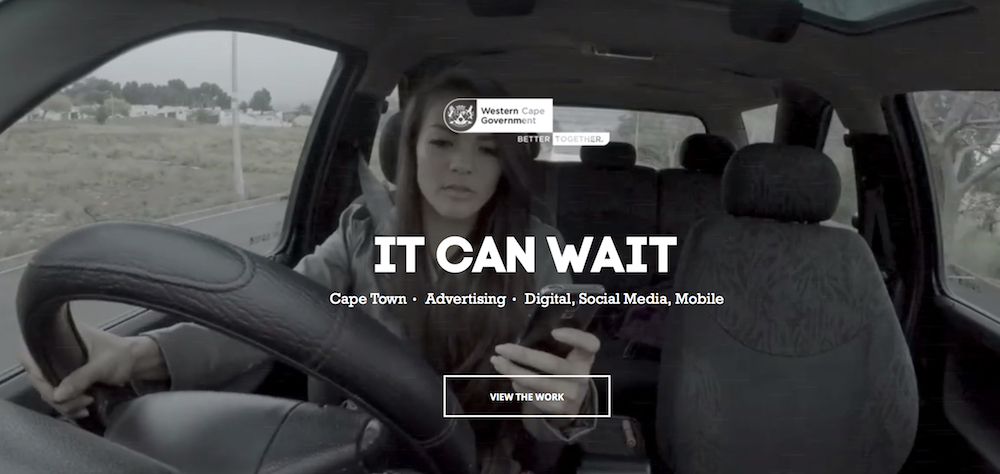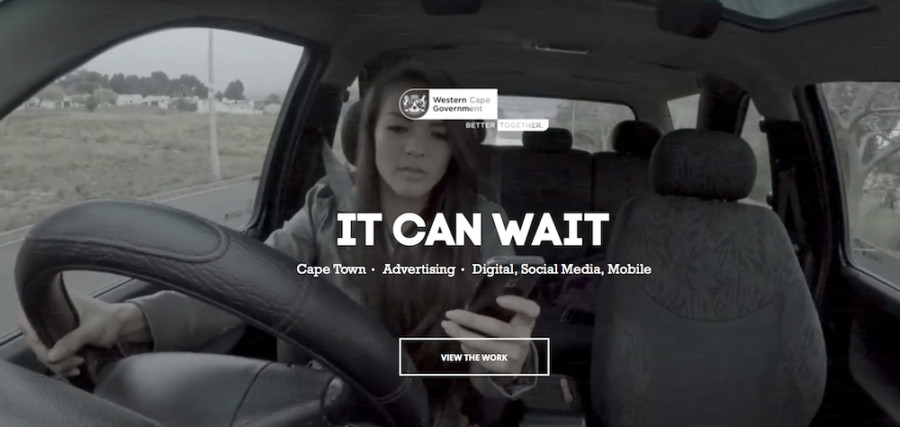

One of the latest videos going viral this summer is a public service advertisement aimed at encouraging people not to text and drive.
It’s an example of social engagement at its best.
Created by FCB Cape Town for the Western Cape Government as part of its #ItCanWait campaign, the 40-second ad begins with a medley of CCTV-style clips showing individuals falling over, walking into objects and generally shaming the human race due to their inability to look up from their phones.
Amusing slapstick clips like these – and let’s face it is very difficult not to chuckle when watching someone walk face-first into a pond due to their inability to look up from their phones – have been around as long as the cameras and phones which record them.
From the grainy VHS montages of You’ve Been Framed to the stand-alone clips which are increasingly providing low-value content for struggling newspapers, depictions of our fellow homosapiens’ misfortunes are clearly popular and well received.
It therefore is not surprising that an advertising agency would use them in one of their commercials, as FCB Cape Town have done.
What is more surprising is the message of the advert itself. The first 25 seconds of the ad, set to fairground/ clown music (just in case you weren’t sure whether you were allowed to laugh or not), are brought to a close with the apt observation that “you can’t even text and walk” – a sentiment which no viewer could really argue with.
The ad then takes as tragic turn, showing dashcam footage of a teenage girl attempting to text while driving, before she rolls her car. It then quickly fades to black, with a single line of white text asking: “So why do you text and drive?”
The video was first uploaded to YouTube and was subsequently shared
Shocking and distressing footage has been a regular feature of public service videos (particularly ones aimed at kids and teens) for the past decade.
Yet it is not reserved to government-backed ads, with charities now seemingly in competition with each other to produce the most heartbreaking commercial.
What makes this ad stand out is the way it draws in the viewer with the amusing clips and music, getting them to lower their guard, before hitting them with the emotional sucker punch.
This appears, judging by the average reaction on social media, to be hitting home, particularly among the younger audience it is targeted at.
The design and structure of the commercial dovetails perfectly with the distribution methods; the video was first uploaded to YouTube and was subsequently shared via social media.
In purely commercial terms, the ad has thus been a phenomenal success – it has been seen and engaged with by much of its target demographic without having to pay for TV commercial time slots.
Sharing on social media thus acts as the primary method of distribution rather than through traditional media.
There are two main conclusions governments should draw from the success of this ad:
Social media is a phenomenal tool for influencing people’s behaviour, for good or ill. Governments must recognise the need to collaborate with entrepreneurs, charities and the private sector to ensure it is utilised to maximum effect.